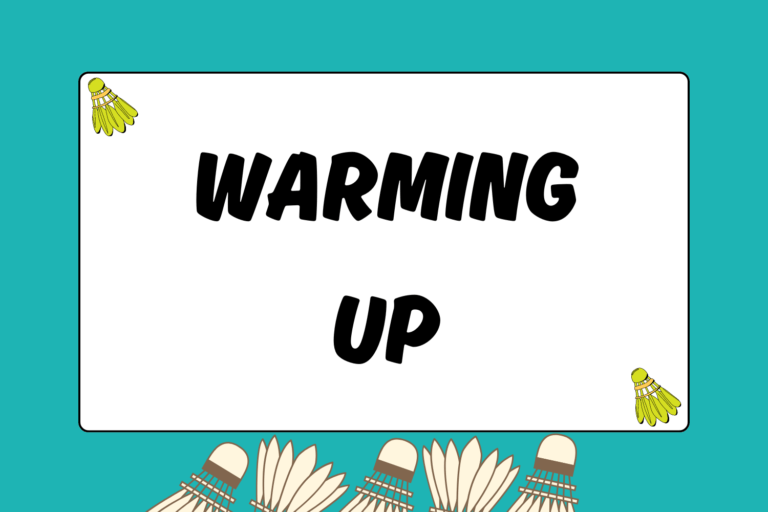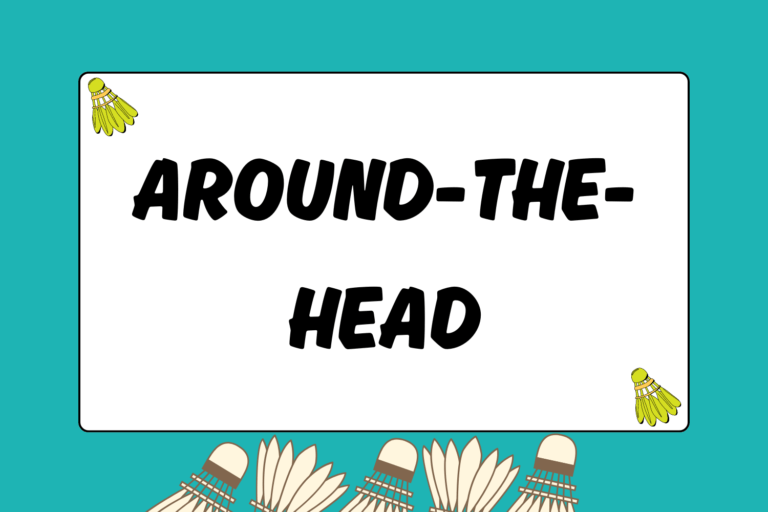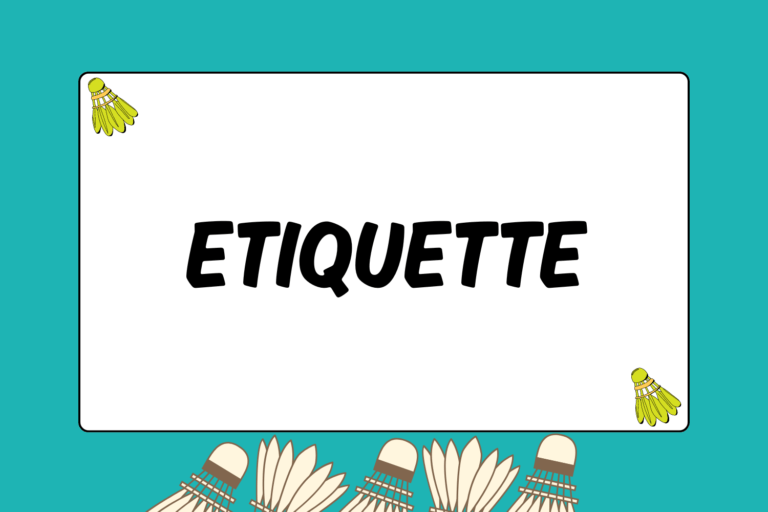Although the number of badminton gyms continues to grow, there still aren’t many convenient ways to get time on the court. Any combination of time, money, and distance can be reasons for keeping you off the badminton court.
Rather than sulk about your misfortune, you can put in some work outside the gym to help you improve your game.
Off-court Practice Tips
While there isn’t a wide range of off-court drills that can legitimately help you on the court, this shouldn’t stop you from working hard if your court time is limited.
Here are a few basic rules to follow when practicing outside a gym:
Practice in a wide-open space
Whether you’re hitting the shuttlecock or not, you’ll want to have plenty of room to do your exercises. Generally this means being outdoors, which may not always have ideal conditions for hitting the shuttlecock. If that’s the case, you’ll want to stick with shuttle-less exercises.
Never hit the shuttlecock indoors
Unless you’re inside a designated badminton gym, you should never hit the shuttlecock indoors. Doing so presents a danger to the people and objects around you.
Visualize the court
With all of these tips and drills, always try to keep in mind how it will translate to your actual on-court experience. If you can visualize certain aspects of the court or a game, then you can cater your exercises to better mimic the movements on a court.
Basic Shot Execution
If you’re having difficulty with basic execution or simply hitting the sweet spot of the racket, there are a few exercises you can do. Ideally, you’ll want to be in an open outdoor space — like your backyard or a grass field in the park. Although the wind is a factor you won’t normally have to deal with, the basic fundamentals of swinging and making solid contact are still rooted in these drills.
Here are some exercises that will benefit new or beginning players:
Service stroke
Having a consistent service will benefit your game tremendously. You can practice your consistency by marking a location for which to aim. Since half the length of an entire badminton court is 22 feet, you’ll want to place a marker at least 22 feet away. This will give you a good feel for how far away you need to serve the shuttlecock.
Underhand stroke
A simple way to practice your underhand stroke is just to hit more underhand shots. To do this, start by using your underhand stroke to hit the shuttlecock high into the air. Continue to use your underhand to keep the shuttlecock in the air. Remember to use full arm strokes to help develop your consistency.
Overhand stroke
Practicing your overhand stroke can be a bit tricky because hitting the shuttlecock straight in the air is something you’ll never actually do on the court.
Start by hitting the shuttlecock up in the air with your underhand stroke and follow up with your overhand stroke to keep the shuttlecock in the air. Just keep in mind that this exercise is strictly for finding the sweet spot in your overhand stroke.
Basic Footwork Exercises
Probably the best technique to practice off the court is your footwork. While having proper bearings on a court is important, the fundamentals of footwork can be refined and perfected anywhere. There are two ways you can practice footwork off the court:
Shuffle
Instead of running to build your endurance, you can shuffle instead. To do this, simply skip sideways in one direction, making sure to keep your knees slightly bent and your arms around chest-height.
The positioning of your body is absolutely essential to practicing footwork well. You can even hold a racket as you practice shuffling to better simulate a real game. Make sure to switch directions once in a while by simply facing the opposite direction.
Create a makeshift court
Half of a badminton court measures 22 feet long and 20 feet wide. Measure these dimensions out and place markers at the four corners. With this makeshift court, you can practice your footwork fundamentals.
Grab your racket and a friend to help you drill the four corners of the court. Have your friend point to any corner each time you return to your base point, and then shuffle your feet quickly to get to that spot.
Conditioning
While going for a five-mile run is a decent way to build stamina, the best practice is to do exercises that simulate real game actions. This not only means doing footwork for an extended amount of time but also breaking down your on-court movements into simple, relatable motions.
Below is a list of exercises that cover the major movements in badminton:
Lunging
In a given badminton match, you will lunge countless times if you have proper footwork. As you do lunges to build strength and endurance, make sure the knee of your back leg touches the ground each time. Set an amount of time (not a distance) that you’ll do lunges and try to constantly improve upon that mark.
Jumping
Find an area with staggered elevations — like stairs or the sidewalk — and do repeated jumps. Keep in mind that you want to build up your endurance so don’t pick a platform that is too high. Depending on how high you can jump, anywhere from eight inches to two feet should give you a good workout. Remember to pace yourself since you’ll be focusing on your stamina.
Shuffling
In addition to improving your footwork, shuffling can be done as a useful form of conditioning as well.
Mental Training
Mental training is a highly subjective area that varies greatly from player to player. Some players prefer having visual aids while others are content to simply visualize. Whatever your case may be, simply follow the tips that cater to you.
With that in mind, there are essentially two main ways to train mentally. These are certainly not the only methods, but they are effective nonetheless:
Replaying Games
Naturally, this method is for the more visual folks who can instantly recall rallies and sequences from the games they played the previous day. Of course, there is always the alternative of taping yourself as you play. If you have the means to record your matches, it’s definitely worth a try. During a game, you won’t have the time or the focus to thoroughly analyze your strategy and make major adjustments to your game.
The biggest mistake you can make when you replay rallies in your mind is only focusing on the shot that ends a rally. While sometimes mistakes are made on the final shot, more often than not, it is the sequence of shots before the last that dictates how the rally will end. For example, recalling a great smash that ended a rally only tells you that a well-placed smash is effective. However, it is likely that a great drop or a strong, clear set you up for the perfect opportunity to smash.
Consult Badminton Resources
Badminton resources are any information you can find from a reliable source (such as coaches, videos, and books). This is an excellent way to learn new strategies or tweak any you previously utilized.
Keep an open mind as you seek advice from other sources. You are consulting these sources because you want fresh perspectives on the topic of badminton, so be open to new opinions.
For What It’s Worth
It can be tough to find motivation to practice badminton outside the gym, but if you dedicate yourself to a few off-court practice sessions, it will make a difference when you finally hit the court.
Make sure you monitor your progress; any sort of improvement in your shots, footwork, or strategy simply confirms that what you’re doing works.
There are certainly limitations to practicing off-court. However, if your court availability is lacking, these drills will help keep your game in top form!





